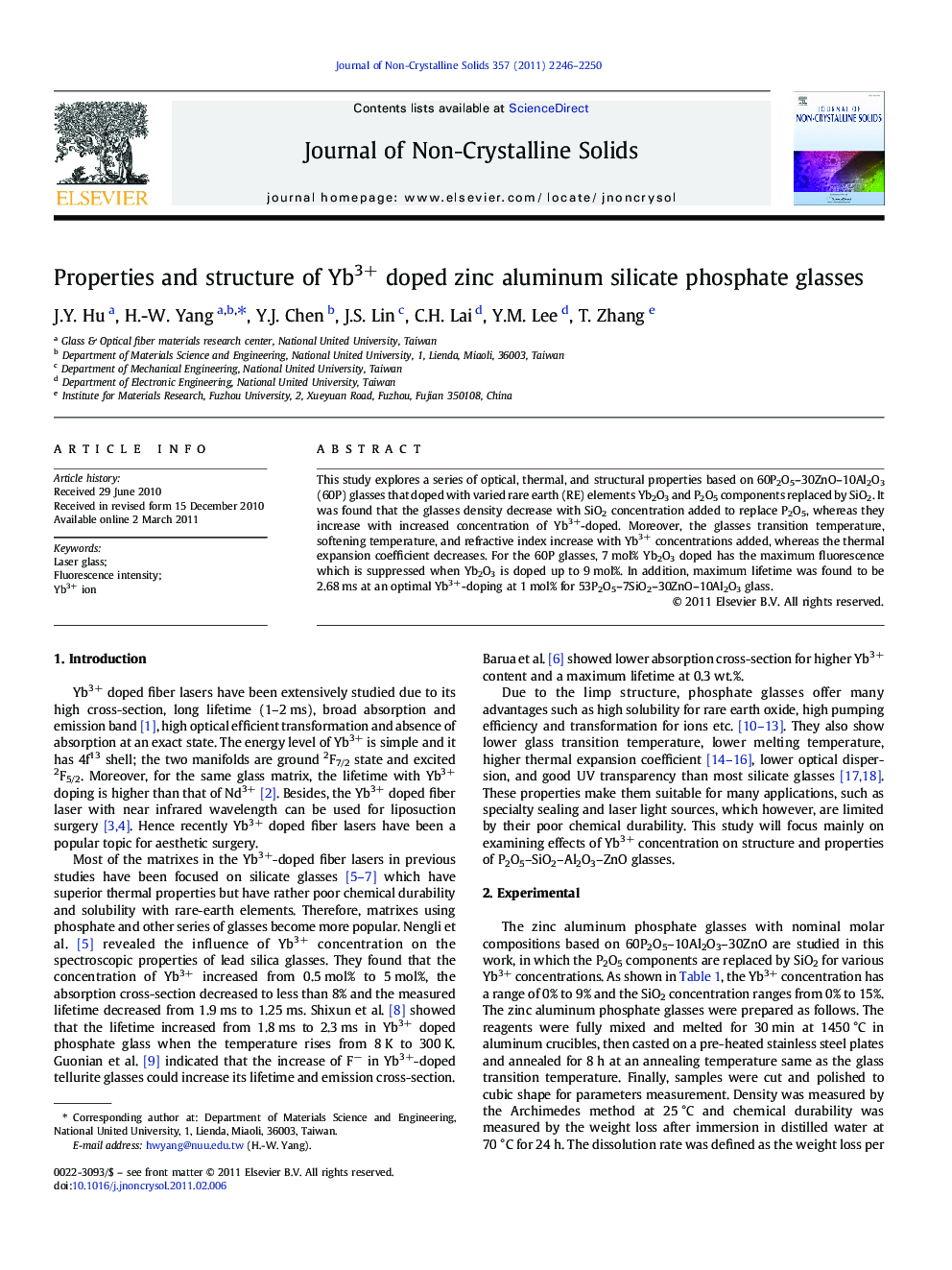| Article ID | Journal | Published Year | Pages | File Type |
|---|---|---|---|---|
| 1481574 | Journal of Non-Crystalline Solids | 2011 | 5 Pages |
This study explores a series of optical, thermal, and structural properties based on 60P2O5–30ZnO–10Al2O3 (60P) glasses that doped with varied rare earth (RE) elements Yb2O3 and P2O5 components replaced by SiO2. It was found that the glasses density decrease with SiO2 concentration added to replace P2O5, whereas they increase with increased concentration of Yb3+-doped. Moreover, the glasses transition temperature, softening temperature, and refractive index increase with Yb3+ concentrations added, whereas the thermal expansion coefficient decreases. For the 60P glasses, 7 mol% Yb2O3 doped has the maximum fluorescence which is suppressed when Yb2O3 is doped up to 9 mol%. In addition, maximum lifetime was found to be 2.68 ms at an optimal Yb3+-doping at 1 mol% for 53P2O5–7SiO2–30ZnO–10Al2O3 glass.
Research Highlights► This study explores for optical, thermal, and structure properties based on 60P2O5-30ZnO-10Al2O3 glasses that doped with Yb2O3 and P2O5 components replaced by SiO2. ► The density decrease with SiO2 concentration added to replace P2O5, whereas they increase with increased concentration of Yb3+-doped. Moreover, the glasses transition temperature, softening temperature, and refractive index increase with Yb3+ concentrations added, whereas the thermal expansion coefficient decrease. ► Maximum lifetime was found to be 2.68ms at 1 mol% Yb3+-doping for 53P2O5-7SiO2-30ZnO-10Al2O3 glass.
